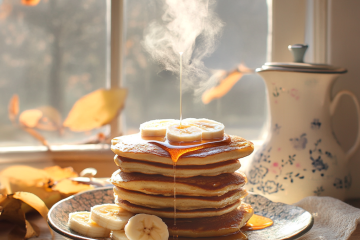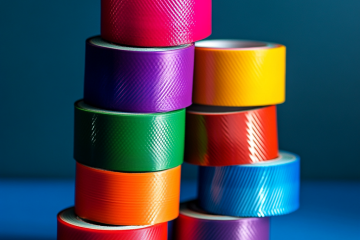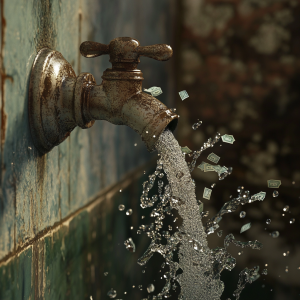
Stop wasting time, effort and money on long-term water storage rotation
The Great Water Storage Myth: Why You Can Stop Playing Musical Bottles
Ever feel like you’re running a water bottle retirement home, constantly cycling out perfectly good H2O because some prepper website told you to? Well, grab your favorite hydration vessel and settle in, because I’m about to flip the script on everything you thought you knew about water storage.
Here’s the shocking truth: if you’re starting with municipal water, you can basically tell your calendar to mind its own business. That’s right – the FDA itself says stored water keeps indefinitely. Indefinitely. As in, your great-grandchildren could theoretically drink the water you store today (though they might have other beverage preferences by then).
Why You Don’t Need to Pre-Treat Municipal Water
Let’s talk chemistry for a moment. Municipal water already comes to your tap pre-treated with chlorine or chloramine, which acts as a bodyguard against unwanted microscopic visitors. These treatments are specifically designed to remain stable and effective for extended periods. Adding additional treatments before storage is like putting a security guard in front of a bank vault – unnecessary and potentially counterproductive.
However, there’s one crucial caveat: this only applies to municipal water. If you’re storing water from a well, spring, or that aesthetic mountain stream you found on your last hiking trip, that’s a different story entirely. Those sources definitely need treatment before storage.
Container Matters: Choose Wisely or Pay the Price
Not all containers are created equal, and choosing the wrong one is like giving algae an all-access pass to your water supply. Here’s the scoop on proper storage containers:
The Champions of Water Storage:
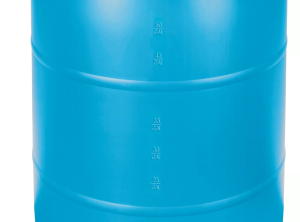
55 gallon water barrel
- Food-grade plastic containers (look for HDPE plastic with recycle symbols 1, 2, or 4)
- Water tanks specifically designed for potable water
- Food-grade stainless steel containers
- Commercial water barrels (those big blue beauties, or military water cans)
The Hall of Shame (Avoid These)::
- Milk jugs (they’re biodegradable and will break down over time)
- Used juice containers (nearly impossible to clean completely)
- Any container that previously held non-food items
- Containers without secure, airtight lids
- Clear or translucent containers (unless you’re trying to grow an algae farm)
The Algae Situation: When Green Isn’t Good
Speaking of unwanted aquatic gardens, let’s talk about how algae can crash your water storage party. Algae needs three things to throw a rager in your water supply:
- Light (they’re like tiny underwater solar panels)
- Warmth (they prefer their environment spa-like)
- Nutrients (they’re not picky eaters)
This is why proper storage is crucial. Those dark blue or green containers aren’t just for looks – they’re blocking out light like bouncers at an exclusive club. And storing your water in a cool, dark place? That’s like putting your algae prevention plan on autopilot.
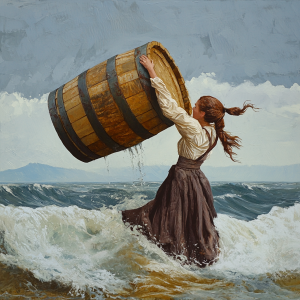
Stop rotating your stored water
“But What About The Weird Taste?”
Ah yes, the infamous “stored water taste” that makes people think their water has gone bad. Here’s a little secret: that taste has nothing to do with safety and everything to do with dissolved oxygen. Your water isn’t tired – it’s just needs to catch its breath! Simply pour it back and forth between two containers a few times (think Tom Cruise in “Cocktail” but with less flair and more practicality), and voilà! Your water will taste fresh again.
The Smart Storage Guide
Want to give your water the five-star treatment it deserves? Here’s how to create the optimal “water resort”:
- Think like a vampire: Store water in dark places and in opaque containers (dark green or blue ones are the MVPs here)
- Keep it cool: Find a consistently cool spot (your water doesn’t need a tropical vacation)
- Clean freak mode: Sterilize those containers before filling them (your water deserves a clean home)
- Treatment options: Consider using water treatment products like Aquamira, which claims to keep water fresh for up to 5 years
- Filtration station: Invest in a good water purifier for when you actually need to use the water
“But What If I’ve Already Been Rotating My Water?”
First of all, don’t feel bad – we’ve all been there. If you’re sitting on hundreds of gallons of “expired” water (which isn’t really a thing, remember?), here are some creative ways to use it:
- Give your lawn a drink (it’s less picky about water vintage)
- Turn it into a spa day for your dog
- Make your car shine
- Keep your houseplants happy
- Do laundry (clothes don’t care about water age)
- Flush toilets (they’re really not picky at all)
The Bottom Line
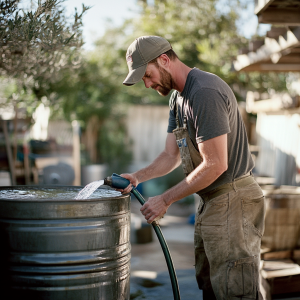
No need to pre-treat municipal water
The next time someone tells you to rotate your stored municipal water, you can confidently tell them that you’re not falling for Big Water’s rotation propaganda anymore. Just remember: store it right, keep it tight, and sleep well knowing your water supply isn’t plotting its revenge for being neglected.
Of course, if you’re really concerned about taste when the time comes to use your stored water, keep some drink mix packets on hand. Because let’s face it – in an emergency, even the pickiest water connoisseur might need to adjust their standards a bit.
Remember: When it comes to municipal water storage, it’s treat before you drink, not before you store. Your future self (and your back) will thank you for not lugging around all those water jugs every six months!
